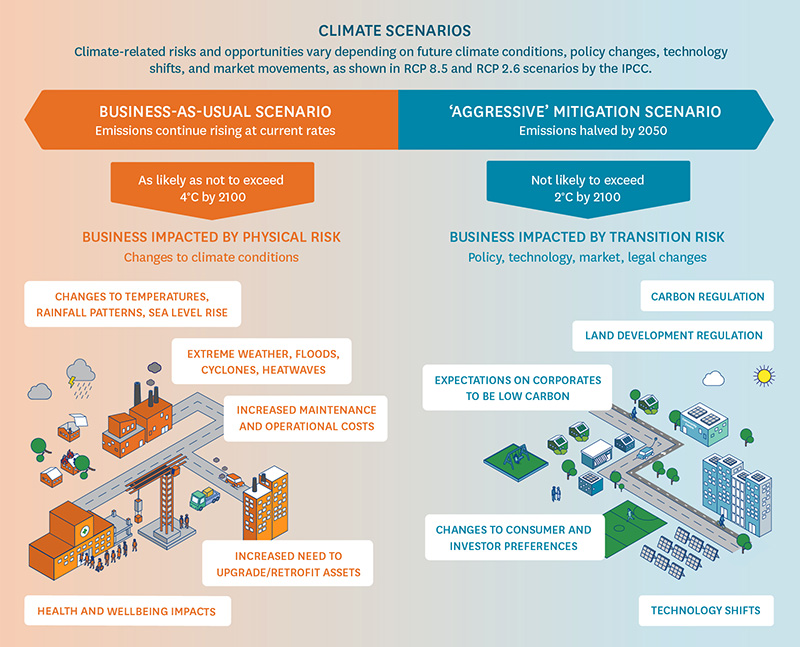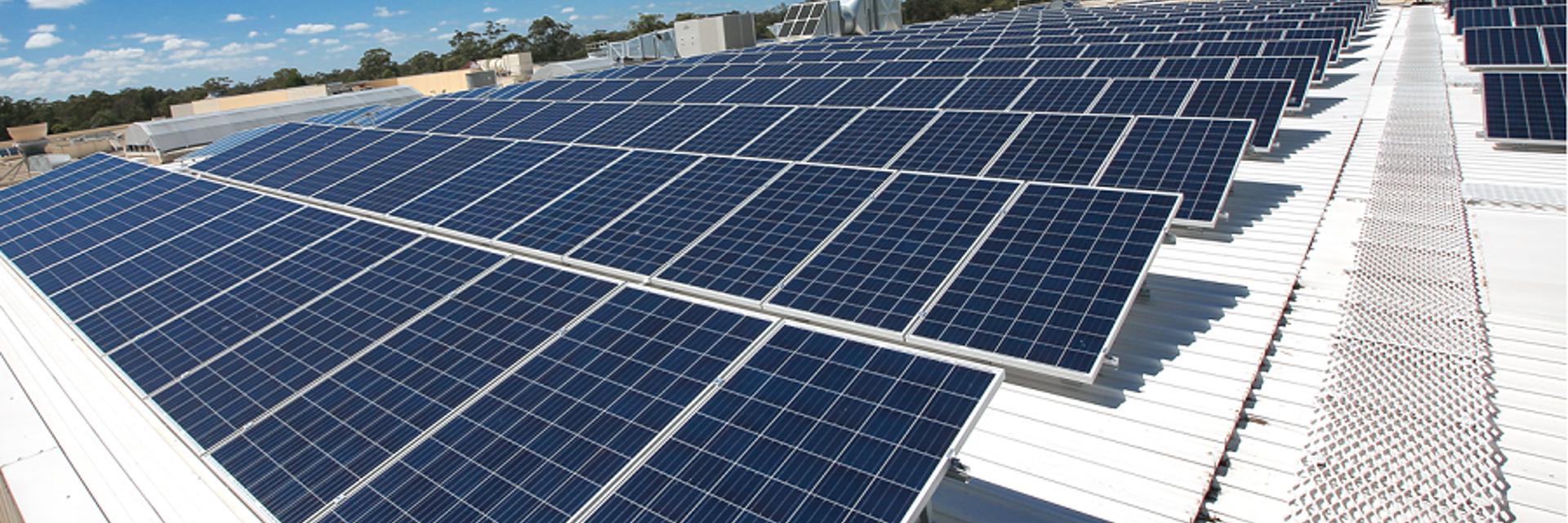What does net zero emissions by 2050 look like for Stockland?
We completed a scenario analysis to understand risks and opportunities presented by a low carbon future, leveraging 2°C scenarios from both the Intergovernmental Panel on Climate Change (RCP2.6[1]) and the Australian contribution to the Deep Decarbonization Pathways Project.[2] Our scenario analysis using 2°C scenarios builds upon our existing scenario analysis that we have used for several years to understand the distribution of physical risks across our portfolio.[3] The analysis involved many teams within our business, such as Development, Project Management, Asset Operations, Group Risk, Group Sustainability, Group Legal, and Stakeholder Relations.
The scenario analysis incorporated the key assumption that Australia would be carbon neutral by 2050 as a means of contributing to the global objective of limiting warming to 2°C compared to a pre-industrial baseline. The analysis included changes to energy networks, climate policy, customer preferences, and investment flows that would plausibly lead to carbon neutrality by 2050.
Our analysis confirmed the importance of policy and legal issues such as carbon pricing and climate risk disclosure, technological issues such as automation and electrification, market issues such as customer and investor preferences for low-
carbon solutions, and reputational issues such as the willingness for governments or employees to work with us if we are seen as a climate laggard. Our industry-leading investment in renewable energy and our continued dedication to energy efficiency position us well to take advantage of opportunities associated with the transition to a low carbon economy.
We have integrated the outcomes of our scenario analysis into our corporate risk register and will continue to use the approach to understand how to remain a climate leader into the future.

An illustration detailing the emissions changes explored in Stockland's 2018 low carbon scenario analysis.
[1] RCP 2.6 is one of four Representative Concentration Pathways published by the Intergovernmental Panel on Climate Change, and is the only RCP likely to limit warming to below 2°C.
[2] The Deep Decarbonization Pathways Project (DDPP) is a global collaboration of scientific research teams that have developed country-specific pathways to reduce emissions consistent with the 2°C objective. The DDPP publication relevant to Australia is ClimateWorks Australia (2014) Pathways to Deep Decarbonisation: How Australia Can Prosper in a Low Carbon World.
[3] In previous scenario analysis we have undertaken, we have used the Intergovernmental Panel on Climate Change RCP8.5 scenario, which assumed minimal effort to reduce emissions and thus results in a global temperature increase of 3.2-5.4°C by 2100. We have used RCP8.5 to understand our exposure to physical risk, as the scenario results in stronger impacts from extreme weather and other climate effects.
